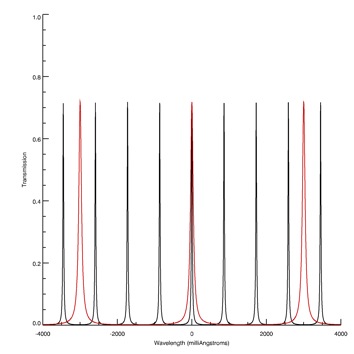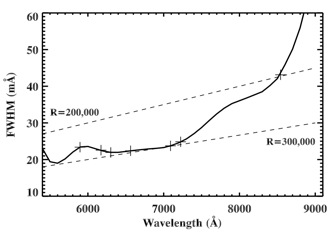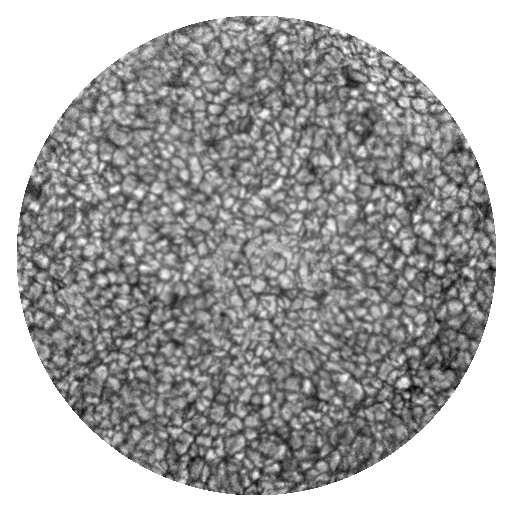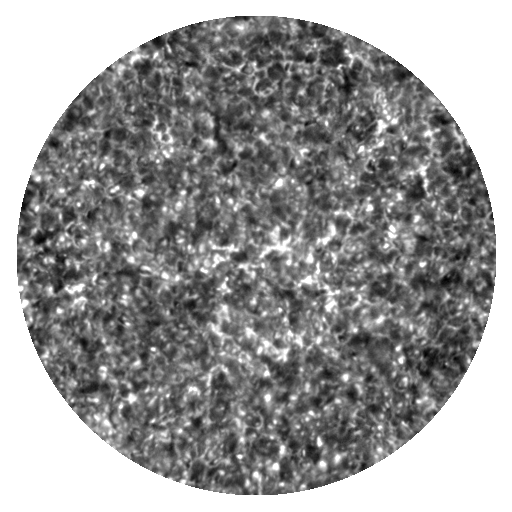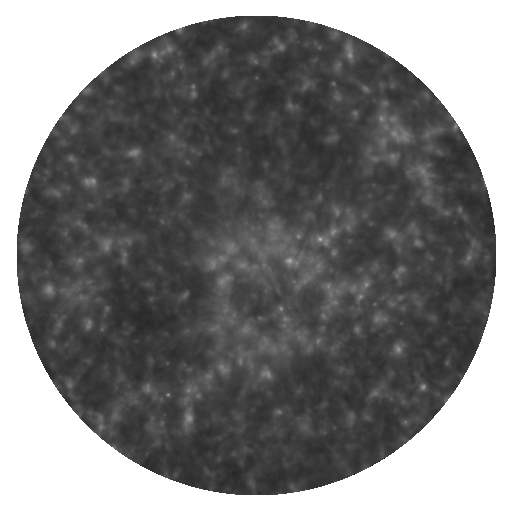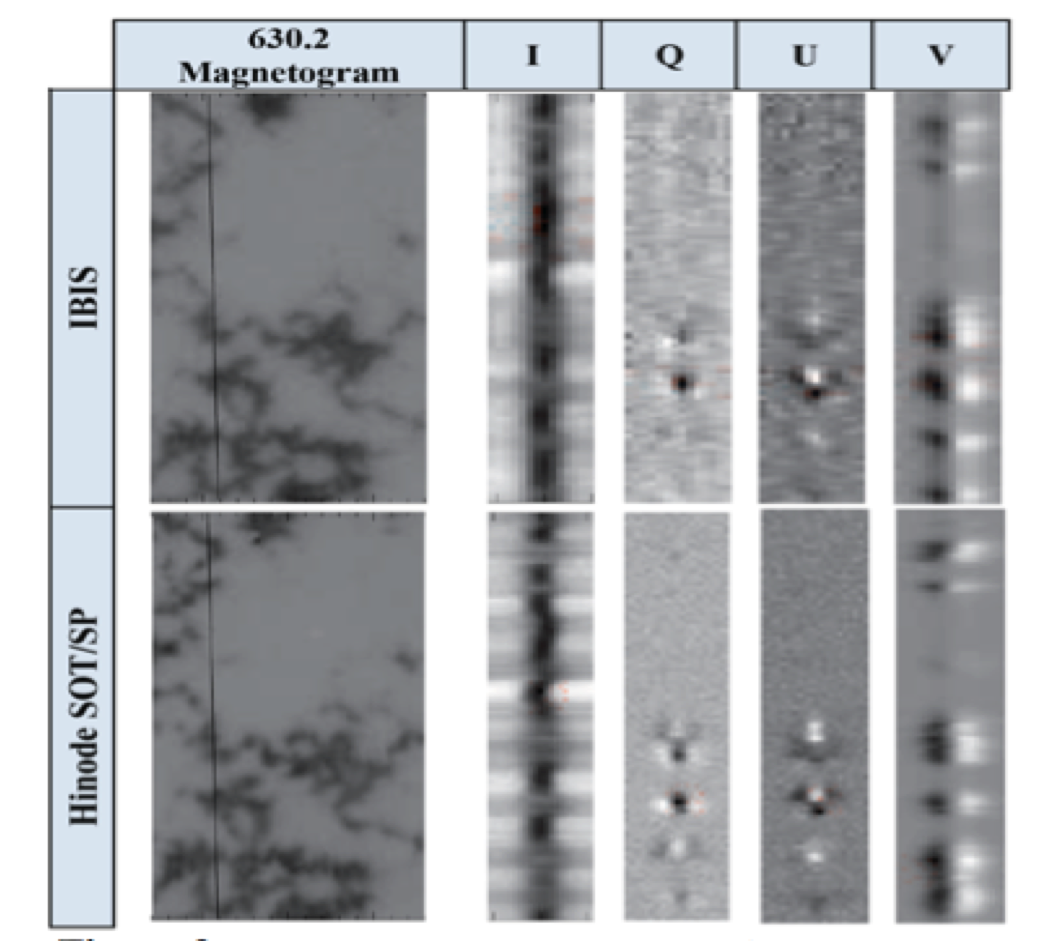How does IBIS work?
|
The following
papers summarize the characterization and technical
performance of IBIS:
|
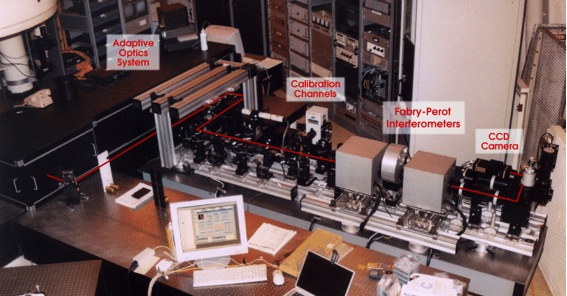 |
| The optical layout of IBIS, with the main instrumental components labeled. The filter wheel is located between the two interferometers. The primary optical path is indicated in red. |
|
The main
components of IBIS are two Fabry Perot
interferometers, 50-mm in diameter, used in series in
a collimated mount. The coating of the interferometers
is optimized for the 550-860 nm spectral range, so
that their combined transmission profiles account for
a spectral resolution greater than 200,000 over the
whole interval; this corresponds to a FWHM of the
instrumental profile of 20-45 mÅ, depending on
wavelength.
The collimated mount of IBIS allows the instrument to exploit the full resolution of the telescope while imaging a large field ov view (about 95" in diameter; this is the largest amongst similar instruments currently in operation). The pixel size is 0.098″ x 0.098″ and the diffraction limit at 600 nm is ∼0.2″. Further, the overall large transparency of IBIS allows for very short exposures, of the order of 25 ms, permitting the use of image reconstruction techniques such as speckle or blind deconvolution.The fast acquisition system consistently achieves 8 frames/sec (and up to 14 fps for image bursts at a fixed wavelength). Depending on the details of acquisition, a single spectral line can be sampled in matter of few seconds or less.
Finally, IBIS can function in
spectropolarimetric mode by modulating the
incoming light with a pair of nematic liquid
crystal variable retarders placed ahead of the
instrument. The polarized light is further
analyzed with a beam splitter positioned in
front of the detector. Two orthogonal states of
polarization are thus imaged onto the same chip,
limiting the field of view to about 40" x 90".
For each wavelength position six modulation
states [I+S, I-S] are detected.
|
||||||||||||||||||||||||
Last Update: November 2015
